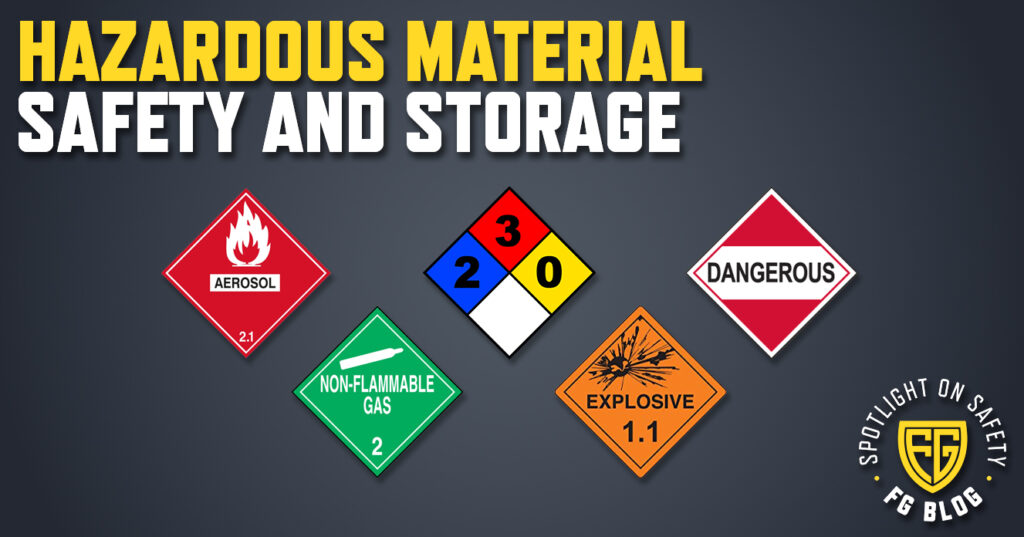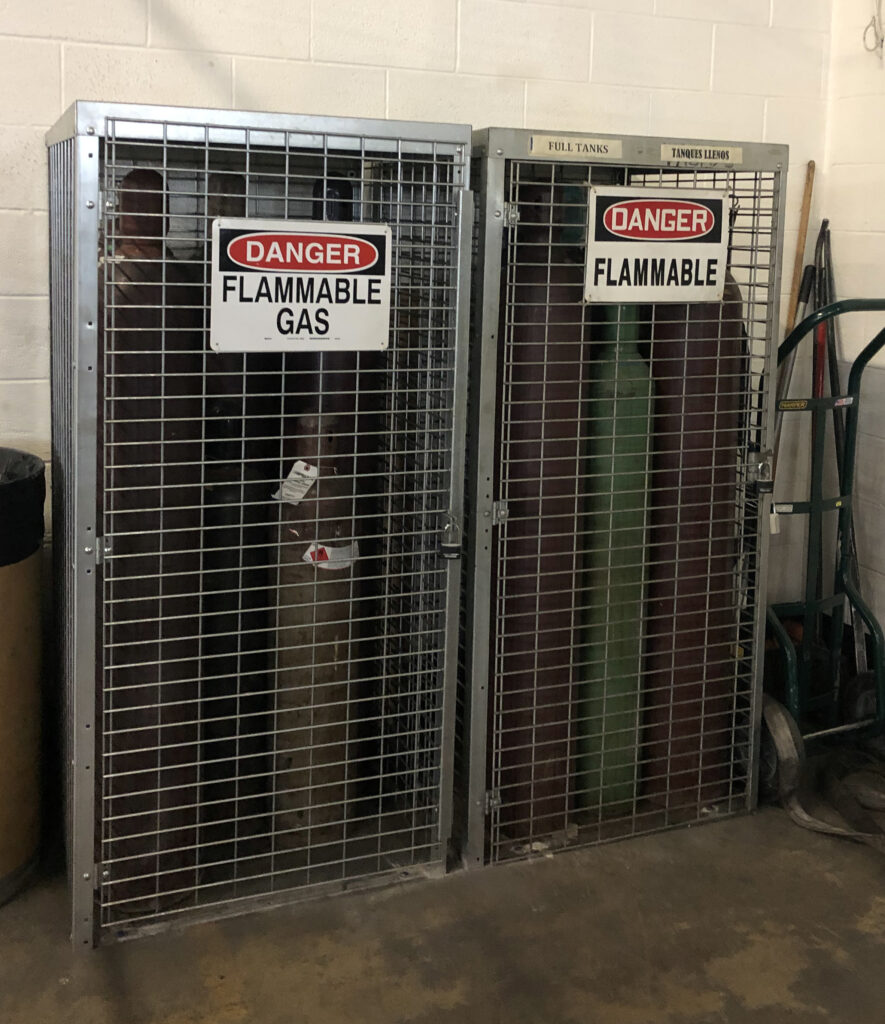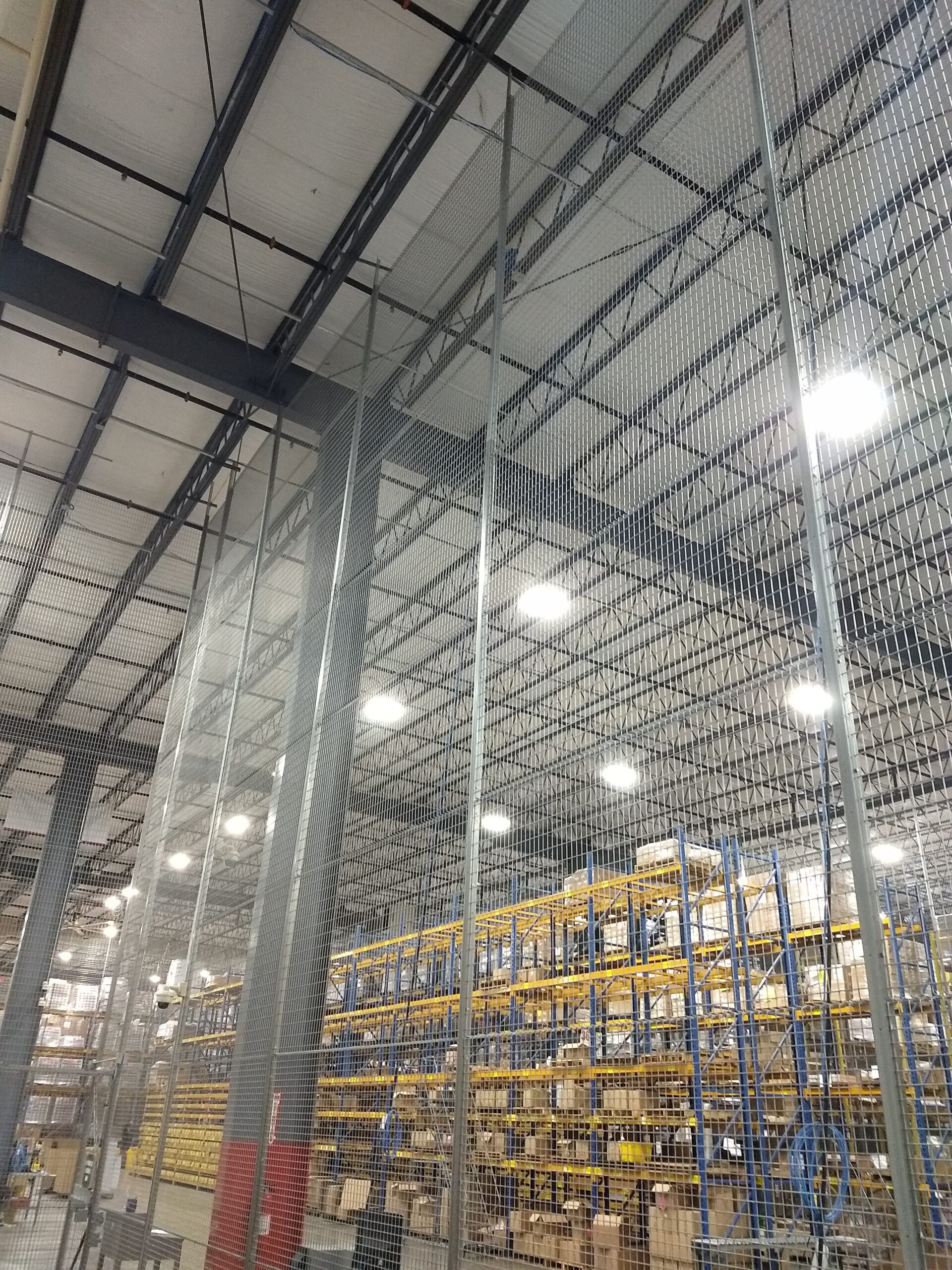Hazardous Material Safety and Storage

It’s time again for another Spotlight on Safety. This month, we’re focusing on chemical handling, safety, and storage. Most warehouses and manufacturing plants have numerous hazardous materials and chemicals at various work stations throughout their facilities. Hence, the importance for all employees to have at least a working knowledge of how to identify and handle those materials to avoid any potential injuries or disasters.
HAZARD COMMUNICATION
Hazard communication is an OSHA requirement stating that all chemical manufacturers, producers, and distributors provide what is called a Safety Data Sheet “for each hazardous chemical to downstream users to communicate information on these hazards.” The SDS, formerly known as the MSDS, or Materials Safety Data Sheet, must be made available and accessible in every work space where workers will come into contact with hazardous materials.
The SDS is a useful tool in identifying every chemical used in a workspace, and also in instructing individual First Aid, handling, exposure controls, and more for each chemical listed. Every employee should know where the SDS is kept in their workplace in case they ever need to reference it.
Another important element of hazard communication is labeling. Every hazard must have a visible and readable label so that it is properly handled and stored. This can also prevent chemicals from being stored in improper containers.
If everything is properly labeled (even personal effects, like water bottles), you can avoid any unfortunate mix-ups. Pictograms of the hazard symbols and the appropriate warnings associated with each chemical can be found in the SDS.
STORAGE
This one seems like common sense, but it is of the utmost importance. For instance, most people know not to store a hazardous chemical in the break room refrigerator alongside packed lunches and sodas. However, did you know that chemicals that require refrigeration should, in fact, be kept in special explosion-proof refrigerators? Additionally, chemicals that aren’t compatible should not be stored together, in case of a spill or leak.
One of the most important aspects of hazardous material storage is ventilation. Make sure all chemical materials are being stored based on their specific requirements, including regards to ventilation.
One great example of a material needing ventilation are gas cylinders. The best way to store gas cylinders is in a specifically designated gas cylinder cabinet, like our Saf-T-Stor® Cylinder Cabinets. The cabinets are made from wire mesh, which provides ample ventilation, and the galvanized metal is sturdy and holds up against corrosion. These cabinets all come with a “Danger Flammable Material” sign, so that the contents can be properly labeled according to OSHA mandates.

Saf-T-Stor® Cylinder Cabinets
Saf-T-10
Qwik-Fence® Partitions
35′ Floor-To-Ceiling Application
It is also important to take great care and caution when storing aerosol canisters, as the wrong conditions could turn them into projectiles. A good way to protect employees from this potential hazard is to store the aerosols in an area with floor-to-ceiling mesh walls with partitions, like our Qwik-Fence® and Saf-T-Fence® Partitions. The ceiling-height design prevents any aerosol canisters from becoming projectiles in the event of a fire or combustion.
For more information on how to properly store chemicals, visit the OSHA or EPA websites.
PERSONAL PROTECTIVE EQUIPMENT
We talk a lot on this blog about PPE, but it is especially important when dealing with potentially volatile chemicals. The SDS will specify what PPE needs to be worn when handling a specific chemical. Some chemicals might require the use of rubber gloves or other protective clothing, while others might call for employees to use a respirator.
It is management’s responsibility to ensure that proper PPE is always available and in good working order. In addition to PPE, it’s important to have emergency eye-wash stations and showers nearby if your employees deal with chemicals that could be corrosive or hazardous to their person.
In short, always do your research before housing a new hazardous material in your facility and work area. Be sure to find out where it needs to be stored and in what kind of container.
Provide proper PPE to prevent harmful exposure to the chemical. Learn what first aid techniques and emergency equipment to use if someone is exposed to that particular chemical.
Always properly label chemicals so employees know what they’re handling, and make sure everyone knows where to find the copy of the Safety Data Sheet.
Negligent material storage can be a recipe for disaster, so make sure everyone has safety in mind at all times, and you can keep your facility running safely and smoothly.


